By Leen Randell
Updated: Jul 19, 2024
10 Best Herbal Creams For Neck Pain
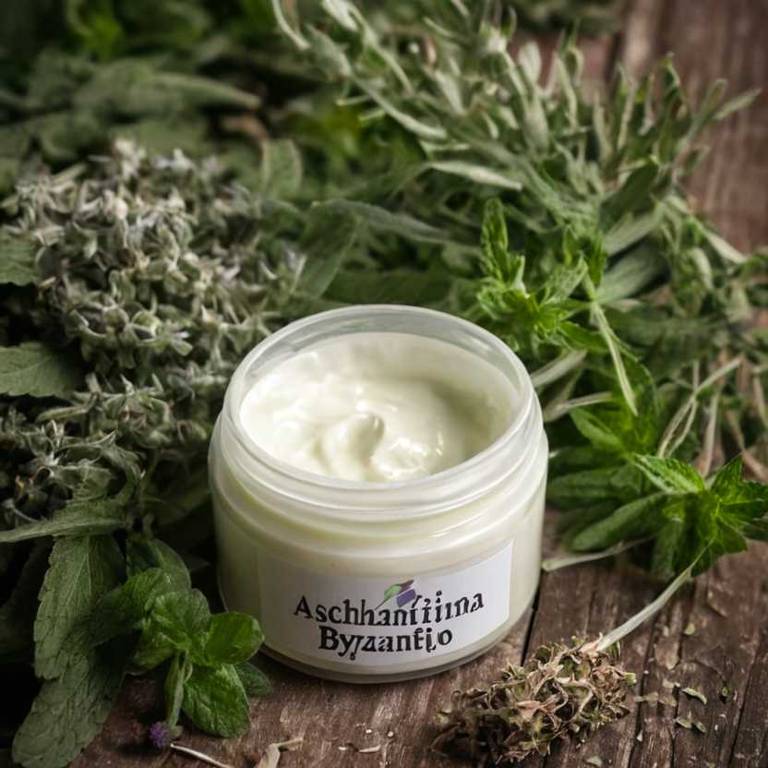
Herbal creams for neck pain are topical preparations containing plant extracts that help alleviate discomfort and reduce inflammation in the neck area.
They typically contain ingredients such as arnica, capsaicin, and menthol, which provide pain relief and promote relaxation.
Examples of herbal creams include arnica gel and capsaicin cream, which have been shown to improve quality of life by reducing pain and stiffness, allowing individuals to engage in daily activities with greater ease and comfort.
The following article describes in detail the most important creams for neck pain, including medicinal properties, parts of herbs to use, and recipes for preparations.
- 1. Camellia sinensis
- 2. Cymbopogon citratus
- 3. Melissa officinalis
- 4. Glycyrrhiza glabra
- 5. Zingiber officinale
- 6. Boswellia serrata
- 7. Arnica montana
- 8. Helichrysum italicum
- 9. Valeriana officinalis
- 10. Curcuma longa
- What is the best combination of herbal creams to use for neck pain?
- What ailments similar to neck pain are treated with herbal creams?
1. Camellia sinensis
Camellia sinensis, also known as tea, creams helps with neck pain because of its anti-inflammatory and antioxidant properties.
The active compounds in Camellia sinensis cream, such as theaflavins and thearubigins, work to reduce inflammation and alleviate pain in the neck muscles. This helps to relax the muscles and improve blood flow, reducing tension and discomfort in the neck and shoulders, providing relief from neck pain and promoting relaxation and well-being.
It is also known to promote skin health and reduce fine lines and wrinkles.
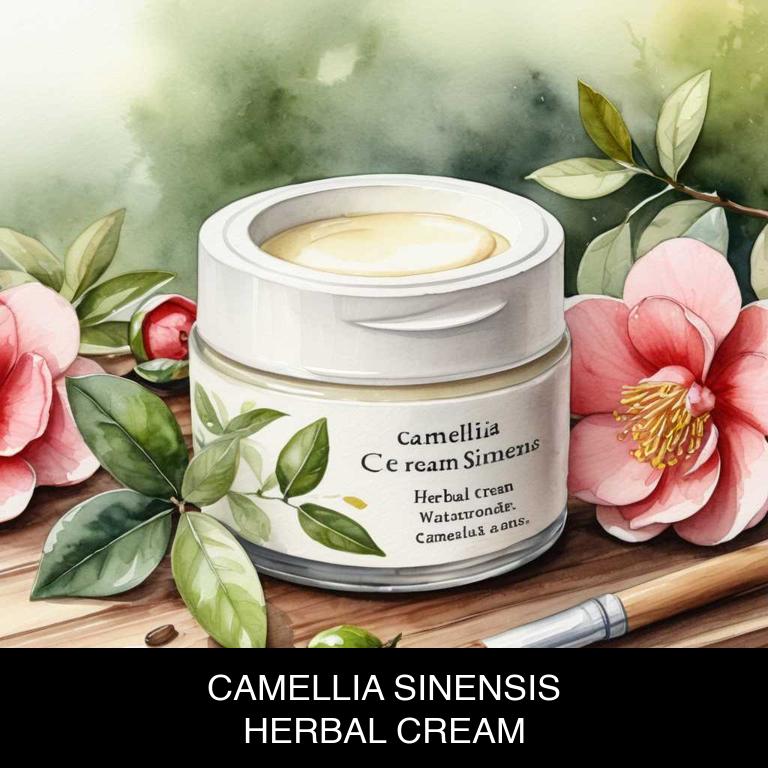
Medicinal Constituents
The list below shows the primary medicinal constituents in Camellia sinensis creams that help with neck pain.
- Catechins: These polyphenolic compounds have anti-inflammatory properties, which can help reduce swelling and pain in the neck area, alleviating discomfort and stiffness.
- Theaflavins: These compounds have been shown to have anti-inflammatory and antioxidant effects, which may help reduce inflammation and promote healing in the neck muscles and joints, leading to pain relief.
- Theanine: This amino acid has a calming effect on the body, which can help reduce muscle tension and promote relaxation, making it easier to manage neck pain and discomfort.
Parts Used
The list below shows the primary parts of tea used to make creams for neck pain.
- Leaves: Camellia sinensis leaves are commonly used due to their high content of antioxidants and anti-inflammatory properties that help soothe and relax muscles.
- Roots: Camellia sinensis roots are used for their analgesic and anti-inflammatory properties, which help reduce pain and inflammation in the neck area.
- Stems: Camellia sinensis stems are used for their antioxidant and anti-inflammatory properties, which help to reduce oxidative stress and inflammation, providing relief from neck pain.
Quick Recipe
The following recipe gives a procedure to make a basic tea for neck pain.
- Harvest camellia sinensis leaves at dawn when dew is still present and leaves are at their most fragrant.
- Steam the leaves for 10 to 15 minutes to release their essential oils and bring them to a temperature of 212f.
- Combine 2 cups of the steamed camellia sinensis leaves with 1 cup of distilled water in a large bowl.
- Infuse the mixture for 4 to 6 hours in a cool dark place allowing the leaves to steep fully.
- Strain the mixture and combine it with 1 cup of coconut oil and 2 tablespoons of beeswax then heat until melted.
2. Cymbopogon citratus
Cymbopogon citratus, also known as lemongrass, creams helps with neck pain because of its anti-inflammatory and analgesic properties.
The key component, citral, present in lemongrass oil has been found to reduce pain and inflammation in affected areas. When applied topically in a cream form, it helps to relax tense muscles and reduce stiffness in the neck, providing instant relief from pain and discomfort.
Additionally, its citrusy aroma has a calming effect, promoting relaxation and reducing stress associated with neck pain.
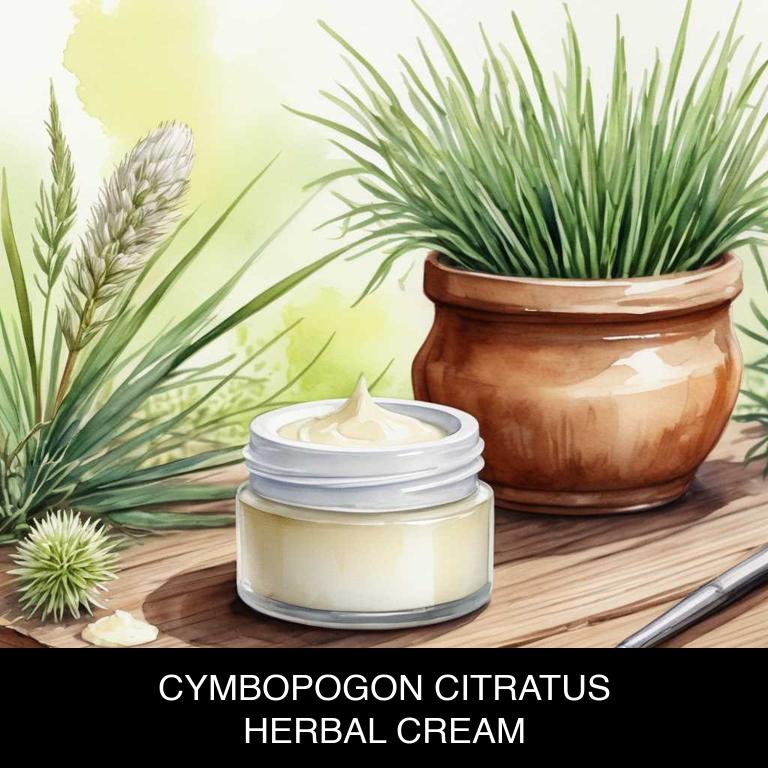
Medicinal Constituents
The list below shows the primary medicinal constituents in Cymbopogon citratus creams that help with neck pain.
- Citral: A terpene that acts as a natural analgesic and anti-inflammatory agent, helping to reduce pain and inflammation in the neck muscles.
- Limonene: A terpene that has shown anti-inflammatory and antioxidant properties, which can help alleviate pain and improve overall neck health.
- Eugenol: A phenolic compound with analgesic and anti-inflammatory properties, which can help reduce pain and inflammation in the neck and surrounding areas.
Parts Used
The list below shows the primary parts of lemongrass used to make creams for neck pain.
- Leaves: They are used to make creams due to their high content of citral and geraniol, which have analgesic and anti-inflammatory properties.
- Rhyzomes: They are used to make creams as they contain compounds that help reduce pain and inflammation in the affected area.
- Barks: They are used to make creams, but this part is less commonly used than the first two, as they also contain compounds that aid in pain relief and anti-inflammatory effects.
Quick Recipe
The following recipe gives a procedure to make a basic lemongrass for neck pain.
- Harvest 1 kg of fresh cymbopogon citratus leaves in the early morning when they are at their peak oil content.
- Dry the harvested leaves in a warm place with good air circulation at 35-40°c for 2-3 days.
- Steep 500 grams of dried cymbopogon citratus leaves in 2 liters of carrier oil such as coconut or sweet almond oil for 2 weeks.
- Strain the infused oil through a cheesecloth or a coffee filter to remove the solids and discard the solids.
- Mix 200 grams of the infused oil with 100 grams of beeswax and 50 grams of shea butter and heat the mixture at 60-70°c until it's smooth and creamy.
3. Melissa officinalis
Melissa officinalis, also known as lemon balm, creams helps with neck pain because of its anti-inflammatory and relaxing properties.
The key active compound, rosmarinic acid, reduces muscle spasms and inflammation, easing tension in the neck muscles. Additionally, Melissa officinalis has a calming effect on the mind and body, which can help alleviate stress and anxiety that often contribute to neck pain.
By applying Melissa officinalis creams topically, individuals can experience relief from neck pain and discomfort.
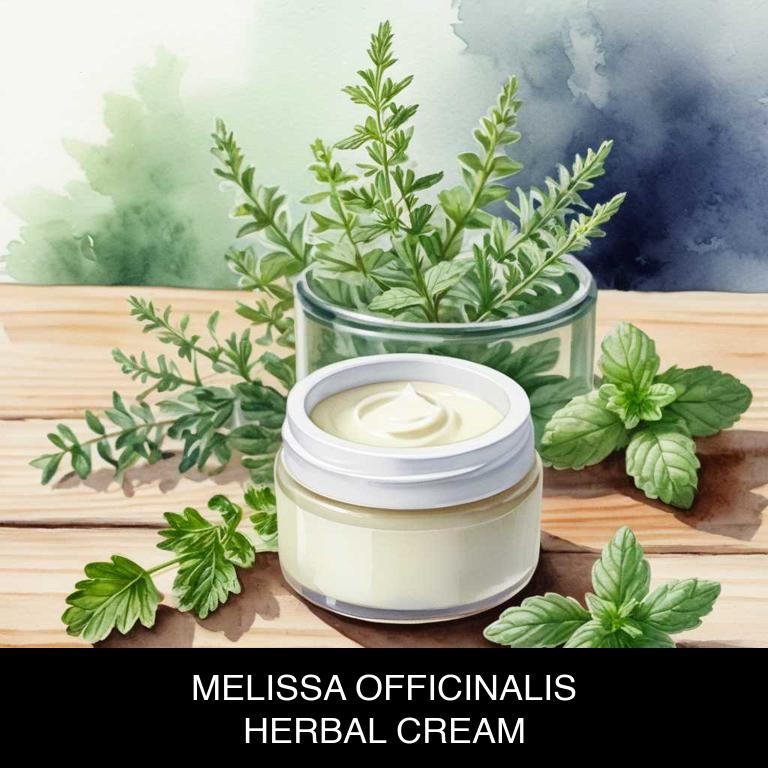
Medicinal Constituents
The list below shows the primary medicinal constituents in Melissa officinalis creams that help with neck pain.
- Rosmarinic acid: As a phenolic compound, rosmarinic acid helps with neck pain by reducing inflammation and promoting relaxation in the muscles and joints.
- Limonene: As a terpene, limonene has anti-inflammatory and analgesic properties, which help to alleviate pain and discomfort associated with neck strain and tension.
- Eugenol: As an aromatic compound, eugenol has a sedative effect, which can help to relax tense muscles and promote better sleep, reducing the severity of neck pain.
Parts Used
The list below shows the primary parts of lemon balm used to make creams for neck pain.
- Leaves: Leaves are used because of their high content of bioactive compounds like tannins, flavonoids, and terpenes, which have anti-inflammatory and analgesic properties.
- Flowers: Flowers are used because they contain a high concentration of citral, a compound with analgesic and anti-inflammatory properties that helps to reduce pain and inflammation.
- Stems: Stems are used because they contain a mixture of bioactive compounds, including flavonoids and terpenes, which contribute to their anti-inflammatory and analgesic effects.
Quick Recipe
The following recipe gives a procedure to make a basic lemon balm for neck pain.
- Harvest 30g of melissa officinalis flowers at the peak of their fragrance and dry them for 2-3 days.
- Steep 10g of dried melissa officinalis flowers in 100ml of cold-pressed oil for 2 weeks.
- Strain the oil through a cheesecloth and discard the solids after 2 weeks.
- Mix 20g of beeswax and 50g of coconut oil with the infused oil in a double boiler.
- Allow the mixture to cool and thicken for 30 minutes before transferring it to a container.
4. Glycyrrhiza glabra
Glycyrrhiza glabra, also known as licorice, creams helps with neck pain because it contains anti-inflammatory compounds that reduce swelling and ease muscle tension.
The cream's soothing properties calm irritated tissues, promoting relaxation and reducing stiffness in the neck. Additionally, licorice root extract's antioxidant properties help to combat oxidative stress, which can contribute to chronic pain and discomfort. By applying this cream topically, individuals can experience relief from neck pain and improved range of motion.
Regular use may also promote long-term pain management.

Medicinal Constituents
The list below shows the primary medicinal constituents in Glycyrrhiza glabra creams that help with neck pain.
- Glycyrrhizin: This triterpenoid saponin helps with neck pain by reducing inflammation and suppressing the production of pro-inflammatory cytokines, which contribute to pain and swelling.
- Licoricidin: This phenolic compound has anti-inflammatory and antioxidant properties, which help alleviate neck pain by reducing oxidative stress and inflammation in the affected area.
- Licorisoflavan a: This flavonoid compound has analgesic and anti-inflammatory properties, which help with neck pain by blocking the production of pain-causing chemicals and reducing inflammation in the muscles and joints.
Parts Used
The list below shows the primary parts of licorice used to make creams for neck pain.
- Roots: They are the primary source of glycyrrhizin, a compound that has anti-inflammatory properties, which helps to reduce pain and inflammation in the neck area.
- Leaves: They contain flavonoids and phenolic acids that have anti-inflammatory and antioxidant properties, which help to soothe and calm the muscles and joints in the neck.
- Barks: They have been found to contain glycosides and flavonoids that help to reduce pain and inflammation, making them a useful component in creams for neck pain relief.
Quick Recipe
The following recipe gives a procedure to make a basic licorice for neck pain.
- Extract 20 grams of dried glycyrrhiza glabra root and finely grind it into a powder using a mortar.
- Combine 40 grams of beeswax and 20 grams of coconut oil in a double boiler to melt at 170°f for 10 minutes.
- Add 10 grams of glycerin and 10 grams of distilled water to the cooled beeswax mixture and stir until well combined.
- Gradually add the ground glycyrrhiza glabra powder to the mixture and stir for 5 minutes until it thickens.
- Pour the mixture into sterilized glass jars and allow it to cool and thicken at room temperature for 30 minutes.
5. Zingiber officinale
Zingiber officinale, also known as ginger, creams helps with neck pain because of its anti-inflammatory and warming properties.
The active compounds in ginger, such as gingerols and shogaols, work to reduce muscle tension and relax the neck muscles. This leads to a decrease in pain and stiffness, allowing for improved mobility and flexibility. Additionally, ginger's analgesic properties help to block pain signals to the brain, providing quick and effective relief from neck pain.
Regular use of ginger creams can also promote overall relaxation and well-being.

Medicinal Constituents
The list below shows the primary medicinal constituents in Zingiber officinale creams that help with neck pain.
- Gingerols: These phenolic compounds have anti-inflammatory and analgesic properties, helping to reduce pain and inflammation in the neck area.
- Shogaols: Similar to gingerols, shogaols also have anti-inflammatory and analgesic properties, which contribute to the pain-relieving effects of Zingiber officinale creams on neck pain.
- Beta-sitosterol: As a terpene, beta-sitosterol has anti-inflammatory properties, which help to reduce inflammation and promote healing in the neck muscles, thereby alleviating pain and discomfort.
Parts Used
The list below shows the primary parts of ginger used to make creams for neck pain.
- Rhyzomes: Zingiber officinale's rhizomes are commonly used to make creams for neck pain due to their high concentration of gingerols, which have anti-inflammatory and analgesic properties.
- Roots: The roots of Zingiber officinale are also used in creams for neck pain relief, as they contain compounds that help reduce muscle spasms and inflammation.
- Buds: Zingiber officinale's buds are used in creams for neck pain due to their high content of volatile oils, which have been shown to have analgesic and anti-inflammatory effects.
Quick Recipe
The following recipe gives a procedure to make a basic ginger for neck pain.
- Harvest 10-15 fresh zingiber officinale roots with a fork, being careful not to damage the roots.
- Wash the harvested roots with cold water, then dry them with a clean towel for 10 minutes.
- Grate 5 grams of the dried zingiber officinale roots into a fine pulp using a grater for 5 minutes.
- Combine 100 grams of distilled water and 20 grams of grated zingiber officinale pulp in a double boiler for 20 minutes.
- Strain the mixture through a cheesecloth and discard the solids, then pour the liquid into a cream base for 10 minutes.
6. Boswellia serrata
Boswellia serrata, also known as frankincense, creams helps with neck pain because of its anti-inflammatory properties.
It contains boswellic acids, which inhibit the production of pro-inflammatory enzymes, thereby reducing swelling and pain in the affected area. The cream's ability to penetrate deep into the skin helps to soothe and calm the muscles in the neck, providing relief from stiffness and discomfort.
Regular application can also promote relaxation and reduce muscle tension, ultimately alleviating neck pain and improving overall well-being.
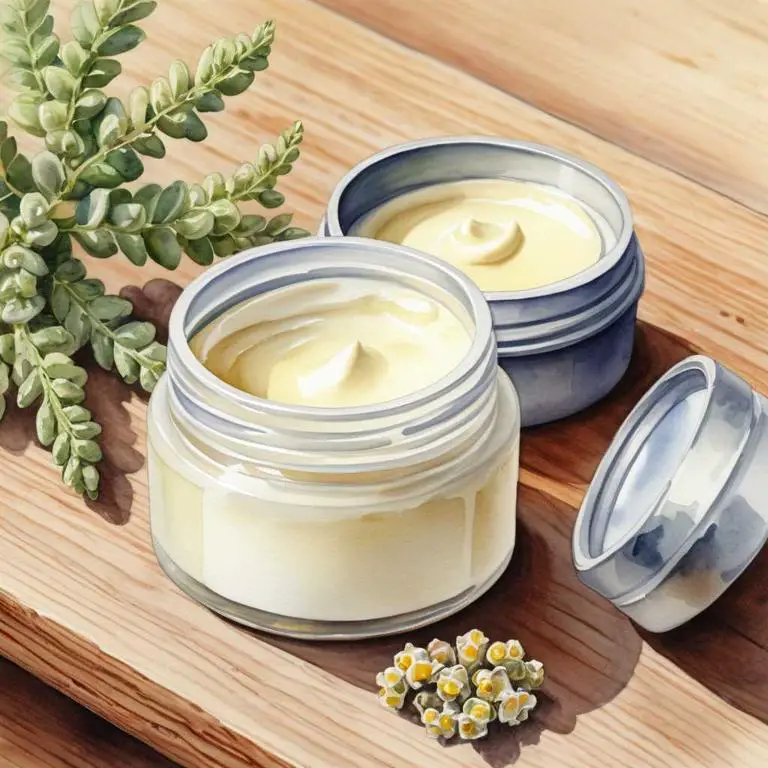
Medicinal Constituents
The list below shows the primary medicinal constituents in Boswellia serrata creams that help with neck pain.
- Alpha-boswellic acid: ABA is known to reduce inflammation and modulate the immune response, which helps to alleviate pain and discomfort associated with neck pain.
- Acetyl-11-keto-β-boswellic acid: AKBA has potent anti-inflammatory and anti-arthritic properties, which help to reduce swelling and pain in the neck and surrounding areas.
- Terpene fraction: The terpene fraction of Boswellia serrata contains boswellic acids, which have anti-inflammatory and antioxidant properties that help to reduce pain and inflammation associated with neck pain.
Parts Used
The list below shows the primary parts of frankincense used to make creams for neck pain.
- Roots: They contain boswellic acids, which have anti-inflammatory properties that help alleviate neck pain.
- Rhyzomes: They contain boswellic acids, which help reduce inflammation and relieve neck pain.
- Barks: They contain boswellic acids and other compounds that have anti-inflammatory and analgesic effects, providing relief from neck pain.
Quick Recipe
The following recipe gives a procedure to make a basic frankincense for neck pain.
- Weigh and combine 100g of beeswax and 50g of cocoa butter in a double boiler to melt.
- Heat 100g of coconut oil and 20g of boswellia serrata resin to 60-70 degrees celsius for 10 minutes.
- Add 20g of shea butter and 10g of vitamin e oil to the melted coconut oil mixture and stir well.
- Gradually add the melted beeswax and cocoa butter mixture to the coconut oil mixture and stir until combined.
- Pour the herbal cream mixture into glass jars and let it cool and solidify for 30 minutes.
7. Arnica montana
Arnica montana, also known as mountain arnica, creams helps with neck pain because it possesses anti-inflammatory properties that reduce swelling and ease muscle tension in the neck and surrounding areas.
The cream's ability to penetrate deep into the skin allows it to target the affected tissues, promoting relaxation and alleviating discomfort. As a result, individuals experiencing neck pain due to strain, overuse, or injury may find relief with the application of Arnica montana cream.
Regular use can also help prevent future episodes.
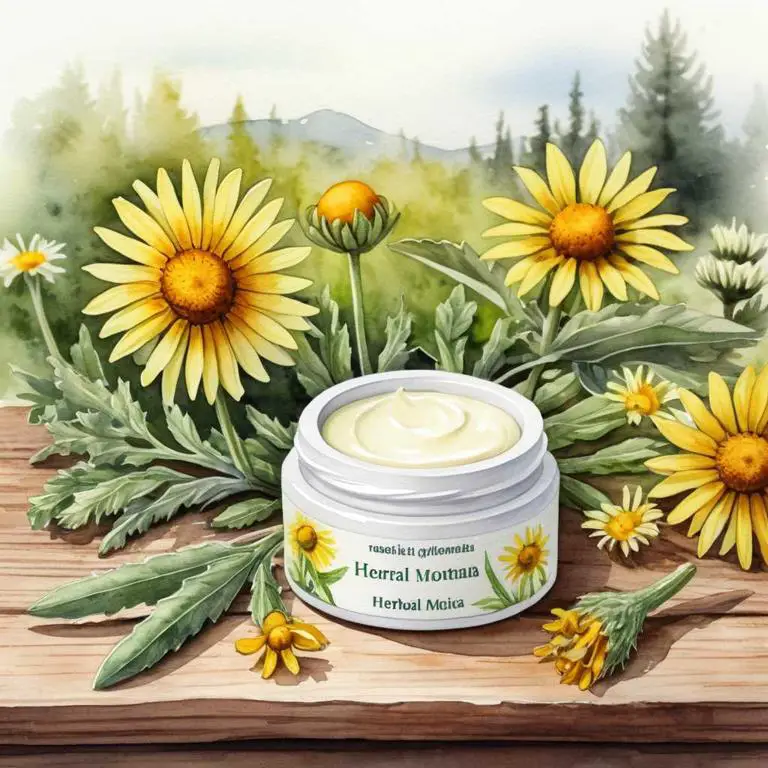
Medicinal Constituents
The list below shows the primary medicinal constituents in Arnica montana creams that help with neck pain.
- Triterpenoid saponins: These compounds have anti-inflammatory properties, helping to reduce swelling and pain associated with neck strain.
- Flavonoids: These antioxidants and anti-inflammatory agents may help reduce inflammation, relax muscle spasms, and alleviate pain in the neck area.
- Thiophene derivatives: These compounds have anti-inflammatory and pain-relieving properties, which may help reduce pain and discomfort associated with neck injuries or muscle strain.
Parts Used
The list below shows the primary parts of mountain arnica used to make creams for neck pain.
- Flowers: The flowers of Arnica montana are the most commonly used part in creams for neck pain because they contain a high concentration of arnica oil, which has anti-inflammatory properties.
- Leaves: The leaves are used in creams for neck pain due to their ability to absorb and retain moisture, allowing for a sustained release of arnica's active compounds.
- Stems: The stems of Arnica montana are used in creams for neck pain as they contain a mixture of essential oils that have anti-inflammatory and analgesic properties, helping to reduce pain and swelling.
Quick Recipe
The following recipe gives a procedure to make a basic mountain arnica for neck pain.
- Harvest 1/2 cup of fresh arnica montana flowers in the early morning after the dew has evaporated.
- Dry the harvested flowers at 105°f for 2 hours to preserve their potency and color.
- Infuse 2 tablespoons of dried arnica montana flowers in 2 cups of carrier oil such as coconut oil for 2 weeks.
- Strain the infused oil and mix it with 1/2 cup of beeswax and 1/4 cup of shea butter to create a smooth consistency.
- Whip the mixture until it thickens and forms a creamy texture that is ready to use immediately.
8. Helichrysum italicum
Helichrysum italicum, also known as curry plant, creams helps with neck pain because it contains anti-inflammatory and analgesic properties that target the root cause of neck pain.
The cream's ability to reduce inflammation and promote healing in the affected area helps to alleviate discomfort and stiffness. Additionally, its analgesic properties work to numb the pain, providing relief from chronic or acute neck pain.
This natural remedy offers a non-invasive and effective solution for managing neck pain.
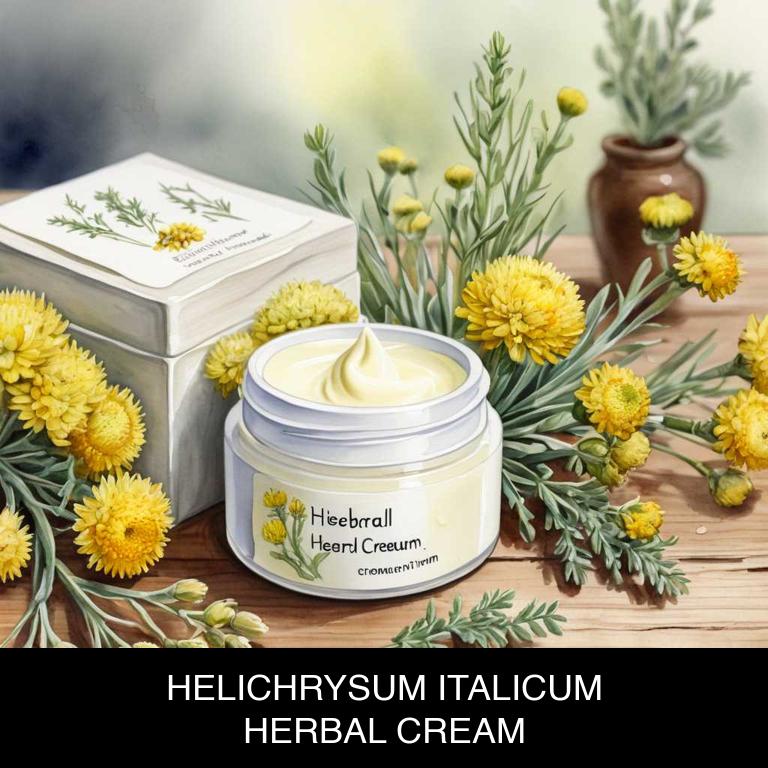
Medicinal Constituents
The list below shows the primary medicinal constituents in Helichrysum italicum creams that help with neck pain.
- N-butylidenephthalide: This sesquiterpene lactone has anti-inflammatory and analgesic properties, which can help reduce pain and inflammation associated with neck strain.
- Nobilinin: A sesquiterpene lactone, nobilinin has potent anti-inflammatory and antioxidant effects, which can contribute to pain relief and tissue protection in the neck region.
- Italidione: A sesquiterpene lactone, italidione has shown anti-inflammatory and analgesic activities, which can help alleviate neck pain by reducing inflammation and modulating pain signaling pathways.
Parts Used
The list below shows the primary parts of curry plant used to make creams for neck pain.
- Leaves: They are used for their anti-inflammatory and analgesic properties, which help to relieve pain and reduce inflammation in the neck area.
- Flowers: They contain essential oils with anti-inflammatory and antispasmodic properties, which can help to relax muscles and reduce pain in the neck.
- Roots: They are used for their anti-inflammatory and antioxidant properties, which can help to reduce inflammation and promote healing in the neck area.
Quick Recipe
The following recipe gives a procedure to make a basic curry plant for neck pain.
- Harvest 20-30 grams of helichrysum italicum flowers and dry them in a low-temperature oven at 35 degrees celsius for 24 hours.
- Grind 10 grams of dried helichrysum italicum flowers into a fine powder using a coffee grinder for 5 minutes.
- Combine 10 grams of the ground powder with 20 grams of beeswax and 20 grams of coconut oil in a double boiler.
- Heat the mixture in the double boiler at 60 degrees celsius for 30 minutes while stirring occasionally until the beeswax melts completely.
- Strain the mixture through a cheesecloth into a clean glass jar and allow it to cool before use.
9. Valeriana officinalis
Valeriana officinalis, also known as valerian, creams helps with neck pain because of its potent anti-inflammatory and analgesic properties.
The active compounds in valerian root, such as valerenic acid and valepotriates, work to reduce inflammation and soothe muscle tension in the neck and shoulder region. By applying valerian cream topically, individuals can experience relief from chronic or acute neck pain, improving range of motion and overall comfort.
This natural remedy can be a valuable addition to a self-care routine for neck pain management.
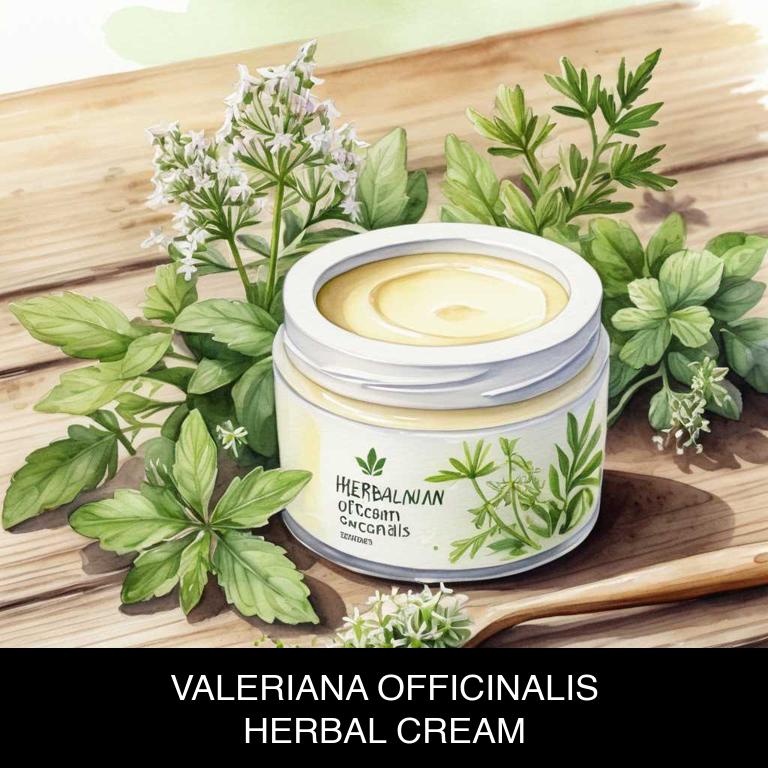
Medicinal Constituents
The list below shows the primary medicinal constituents in Valeriana officinalis creams that help with neck pain.
- Valerenic acids: These compounds have anti-inflammatory properties, which may help reduce swelling and pain associated with neck strain.
- Valerenal: A sedative constituent, valerenal may help alleviate muscle tension and spasms in the neck, promoting relaxation and pain relief.
- Isovalerenol: This sesquiterpene has a sedative effect and may help reduce anxiety and stress, which are common contributors to muscle tension and neck pain.
Parts Used
The list below shows the primary parts of valerian used to make creams for neck pain.
- Roots: They are used due to their high concentration of valerenic acid, which has analgesic and anti-inflammatory properties.
- Roots: They also contain valepotriates, which have sedative and anti-inflammatory effects that can help alleviate neck pain.
- Roots: Additionally, the roots of Valeriana officinalis contain a compound called isovaleric acid, which has a soothing effect on muscles and can provide relief from neck pain.
Quick Recipe
The following recipe gives a procedure to make a basic valerian for neck pain.
- Infuse 250ml of carrier oil such as sweet almond oil with 20g of dried valeriana officinalis roots for 2 weeks.
- Strain the infused oil through a cheesecloth or a coffee filter into a clean container.
- Add 10g of beeswax to the infused oil and heat the mixture in a double boiler to 160°f.
- Stir in 10ml of vitamin e oil and 10ml of lavender essential oil.
- Pour the mixture into a clean container and let it cool and solidify at room temperature for 30 minutes.
10. Curcuma longa
Curcuma longa, also known as turmeric, creams helps with neck pain because it contains anti-inflammatory and analgesic properties that alleviate muscle and joint discomfort.
The active compound, curcumin, inhibits the production of pro-inflammatory enzymes, reducing swelling and pain in the neck and shoulder areas. Additionally, turmeric creams promote relaxation and soothe tense muscles, allowing for improved flexibility and range of motion, making it an effective treatment for neck pain relief.
It can be used as a topical application to provide quick and targeted pain relief.

Medicinal Constituents
The list below shows the primary medicinal constituents in Curcuma longa creams that help with neck pain.
- Curcuminoids: Curcuminoids, particularly curcumin, help with neck pain by reducing inflammation and modulating pain pathways, making it an effective anti-inflammatory and analgesic agent.
- Ferulic acid: Ferulic acid, a phenolic compound, helps with neck pain by inhibiting the production of pro-inflammatory enzymes and reducing oxidative stress, which contributes to the development of pain and inflammation.
- Tumerone: Tumerone, a sesquiterpene, helps with neck pain by reducing inflammation and modulating pain transmission, making it an effective anti-inflammatory and analgesic agent.
Parts Used
The list below shows the primary parts of turmeric used to make creams for neck pain.
- Rhyzomes: Rhyzomes are the most commonly used part of Curcuma longa due to their high curcumin content, which has potent anti-inflammatory properties.
- Roots: Roots are another primary source of curcumin, making them a popular choice for creams due to their analgesic and anti-inflammatory effects.
- Leaves: Leaves of Curcuma longa are used in some creams due to their antioxidant properties, which can help reduce inflammation and promote healing in the neck area.
Quick Recipe
The following recipe gives a procedure to make a basic turmeric for neck pain.
- Extract 2 teaspoons of dried curcuma longa root in 1 cup of boiling water for 10 minutes.
- Strain the mixture and discard the solids after letting it steep for 5 minutes.
- Combine 1/4 cup of beeswax and 1/4 cup of coconut oil in a double boiler.
- Add the curcuma longa infusion and 2 tablespoons of shea butter to the mixture and stir well.
- Allow the mixture to cool and thicken for 30 minutes before pouring into containers.
What is the best combination of herbal creams to use for neck pain?
The best combination of herbal creams that help with neck pain is Arnica and Peppermint.
Arnica, with its anti-inflammatory properties, reduces swelling and pain in the neck area, while Peppermint provides a cooling sensation, relaxing tense muscles and improving blood circulation. The combination of these two creams can also ease muscle spasms and stiffness, allowing for a full range of motion and providing long-lasting relief from neck pain.
Regular application can lead to significant improvement in discomfort and mobility.
What ailments similar to neck pain are treated with herbal creams?
Ailments similar to neck pain that are treated with herbal creams are often musculoskeletal conditions such as back pain, shoulder pain, and sciatica.
These herbal creams typically contain ingredients like arnica, capsaicin, and methyl salicylate that help reduce inflammation, relax muscles, and alleviate stiffness.
They may also contain herbs like willow bark and ginger that provide analgesic and anti-inflammatory properties to ease discomfort.